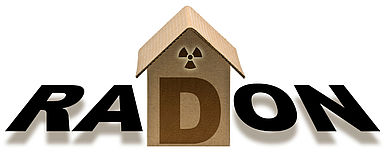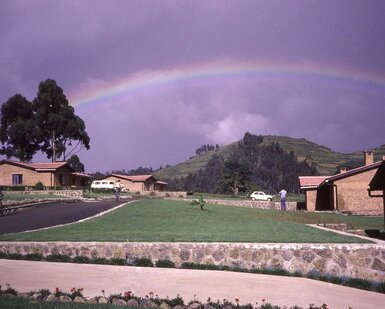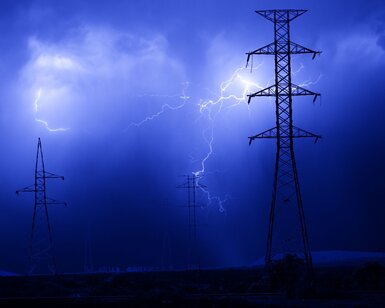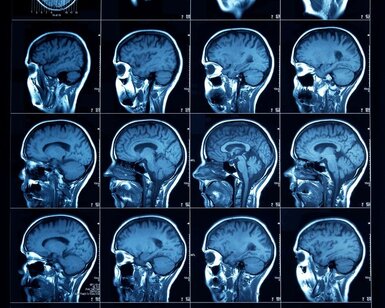Please type a search term (at least two characters)
News
EMPIR project assesses European facilities for calibrating radon detectors

Work by an EMPIR project to improve radon monitoring has completed an assessment of 15 radon calibration facilities in Europe
Completed EMPIR project Metrology for radon monitoring (16ENV10, MetroRADON) has developed methods for monitoring radon with the goal of limiting public exposure.
Radon (222Rn) is estimated to be the cause of 3 - 14% of all lung cancer cases, corresponding to 15,000 - 20,000 deaths in Europe every year. The EU Basic Safety Standards (EU-BSS), which aims to limit exposure and support protection from radiation throughout Europe, has set the maximum limit on radon activity concentration to 300Bq/m3 for indoor spaces, including workplaces. To meet this limit, the MetroRADON project has developed measurement techniques and traceable radon reference materials suitable for calibrating radon measurement instruments at low activity concentrations. It has also developed methods for counteracting the influence of the isotope thoron (220Rn) and its ‘progeny’ (the radioactive elements that thoron can decay into e.g., polonium, bismuth), which are known to bias measurements of radon activity concentration.
Facilities assessment
In addition to previous work defining high-exposure ‘radon priority areas’ and developing a new mapping method to limit public exposure, the project has contributed to European radon monitoring by producing an assessment of available calibration facilities for radon measurement devices. The assessment, which involves 15 facilities from 12 countries in the EU and one from Montenegro, is the most comprehensive of its kind.
Inter-laboratory comparisons by both BfS (Germany) and SUJCHBO (Czech Republic) have allowed for the calibration of 9 measuring devices, as well as the intercomparison of secondary standards at 8 laboratories. Because of the considerable number of participants, many different positions within the metrological hierarchy were represented in the assessment, allowing for a representative validation of performance and quality.
The achievements of this assessment have been summarised in the report ‘Network of European calibration laboratories for radon concentration in air measurement’, produced by the Czech Metrology Institute (CMI).
Other achievements
- Input into IAEA Safety Guide
The project is expected to contribute to the IAEA Specific Safety Guide No. SSG-32 ‘Protection of the Public against Exposure Indoors due to Radon and Other Natural Sources of Radiation.’ This will be regarding the project’s methods for reducing thoron and temperature interference on radon measurements. The project will also contribute to revision of the World Health Organisation’s Radon Handbook.
- Guides for primary standards and calibration
The project has produced two guides: ‘Guideline on the constituents of the chain “from primary standards to radon maps” (traceability) and the links between them’, and ‘Recommendations on calibration and measurement procedures for the determination of radon concentration in the air.’ The former details guidelines for the development of radon sources, the calibration of measurement instruments for low activity concentrations and how to correct for the influence of thoron on measurements. The latter lays out recommendations for measuring radon in ambient air, including recommendations for interlaboratory comparisons and requirements for instruments.
- Measurement uncertainty
The project has successfully reduced uncertainty in radon measurements to its target of <5% for low activity concentrations between 100 - 300 Bq/m3. This has been achieved through the development of novel calibration procedures and radon reference sources.
- CD/DVD radon measurement validation
The project has validated a novel method for retrospective radon measurement using CD/DVDs. The polycarbonate that makes up CD/DVD discs absorbs the alpha emissions produced by radon decay, which can then be counted to quantify radon activity over a period of time. The novel method evaluated by the project uses a layer of polycarbonate Makrofol foil between two discs to create a larger detection surface area, allowing for detection of low radon concentrations. This method will be ideal for use inside buildings in ‘radon priority areas’, or for measuring radon exhalation from soil.
- Limiting bias in radon measurements
The project has made several contributions towards addressing various sources of bias in radon measurements. A range of radon detectors (16 active and 19 passive) were studied to understand the extent of thoron interference, with some found to experience interference of more than 20%. Temperature dependence was also studied and different techniques for reducing interference, including filters, foils, and membranes, were tested and characterised. While recommendations have been made for the construction of new radon monitors not sensitive to thoron, an unexpected finding has led to the creation of a state-of-the-art module which could modify existing detectors to compensate for thoron interference, temperature-related bias, and humidity interference concurrently.
- New journal articles
The project has published three new journal articles in 2022. These cover the effects of passive diffusion barriers against thoron on the accuracy of radon measurements, the interlaboratory comparison conducted on European radon calibration facilities, and a review of radon surveys across Europe. Links to these articles are available from the MetroRADON website.
Franz Josef Maringer, who coordinated the project at BEV, has said about the project:
“The results of the MetroRADON project provide the necessary metrological basis for the precise measurement of radon activity concentrations in indoor breathing air. The methods developed will be used in national and international guidelines for radon measurement and radon risk mapping as well as in the development of new radon monitoring methods. Thankfully, the EMPIR research project can make a significant contribution to tackling the radon problem in Europe.”
This EMPIR project is co-funded by the European Union's Horizon 2020 research and innovation programme and the EMPIR Participating States.
Want to hear more about EURAMET?
Supporting automated and reconfigurable manufacturing systems more
Working with external project Cool White to test and suggest improvements on the locally available white paints more
The project FutureEnergy has provided new calibration services for ultra-high voltages and a good practice guide on Lightning Impulse dividers more
For many of the 5000 photonics companies in Europe a precise knowledge of a material’s optical properties is vital for industrial competitiveness more
The project partners publicised the metrological developments for electronic brachytherapy and were able to contribute to several standards more





